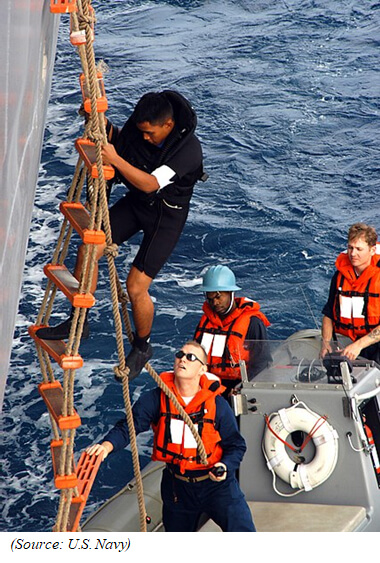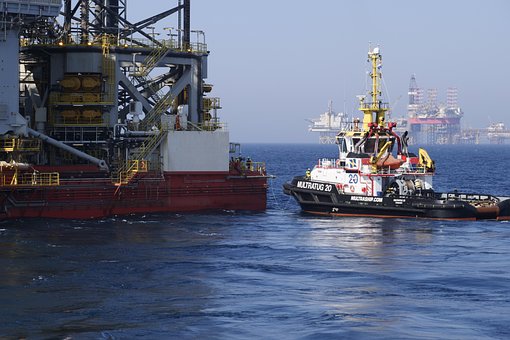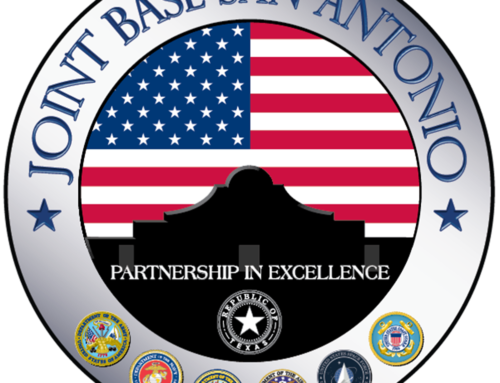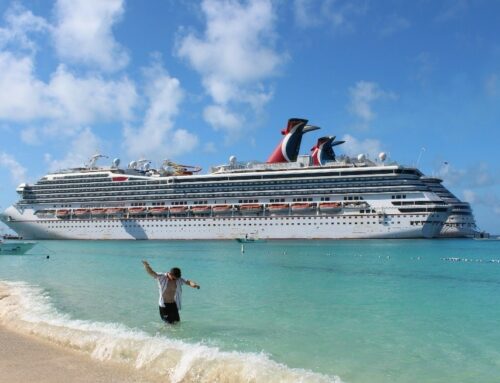The Hidden Hazards of Maritime Personnel Transfer

(Hospital ship USNS COMFORT (T-AH 20) off the coast of Jeremie, Haiti, Dec. 11, 2022. Source: U.S. Navy)
A disembarkation gone wrong involving two sailors transferring to the Navy ship USNS COMFORT off the coast of Haiti was caught on video. Although the sailors reportedly sustained only minor injuries, the incident crucially demonstrates an unavoidable and often overlooked routine hazard for seamen and offshore workers: maritime personnel transfers.
Whether by helicopter, boat (as in the case of the USNS COMFORT), or gangway, embarking and disembarking can go awry in many ways. The incident involving the COMFORT occurred when a small boat with 19 passengers (12 sailors and 7 civilian personnel), while being lifted to the deck of the Navy vessel, listed haphazardly on its side; in the video, two people can be seen plunging approximately 40-50 feet into the turbulent sea below, while onlookers scream in horror.
Many factors must be considered when undertaking any maritime personnel transfer, including the type of vessel and deck layout, wind speeds, sea state, temperature, visibility, and vessel’s motion. For example, standard procedure for boarding the COMFORT would typically involve transfer via water taxi and ladder, but choppy surf motivated the crew to utilize the crane instead. While this incident is still under investigation, there is speculation whether the ship’s crane was operated safely, if the method was safe fundamentally, and whether it would have been better to simply wait for better sea conditions.
 Several types of methods are commonly used for completing maritime personnel transfers, each with its own advantages and risks. Ladders and personnel transfer baskets, also known as Billy Pugh baskets, typically are used when transferring vessel-to-vessel. Helicopters are preferred for less easily accessed platforms/vessels. Gangways are usually safest for personnel transfers from shore or other fixed surfaces. However, all these methods involve some risk of falling, drowning, and pinching or crush injuries. Of course, these risks are highest when equipment is overloaded, improperly operated, defective, poorly maintained, or not inspected before use.
Several types of methods are commonly used for completing maritime personnel transfers, each with its own advantages and risks. Ladders and personnel transfer baskets, also known as Billy Pugh baskets, typically are used when transferring vessel-to-vessel. Helicopters are preferred for less easily accessed platforms/vessels. Gangways are usually safest for personnel transfers from shore or other fixed surfaces. However, all these methods involve some risk of falling, drowning, and pinching or crush injuries. Of course, these risks are highest when equipment is overloaded, improperly operated, defective, poorly maintained, or not inspected before use.
Another example of this happened on a windy day in January 2017, when three offshore workers in the Gulf of Mexico being transferred via crane and Billy Pugh basket to a production platform were injured when the boom began to swing uncontrollably and collided with the vessel’s railing. Upon investigating, the Bureau of Safety and Environmental Enforcement (BSEE) concluded the hydraulic swing gear motor had failed, due to improper installation and inspection/maintenance.
Incidents such as this show though external factors such as bad weather/rough seas are a constant potential danger for transfers, adequate equipment, training, planning, and communication are the best ways to prepare to mitigate any risks faced during transfers. By maintaining seaworthy vessels, providing appropriate personal protective gear, and implementing training on job duties and safety procedures, maritime employers can best safeguard the wellbeing of their crew.
To view the video of the USNS COMFORT personnel transfer incident: https://gcaptain.com/shocking-video-shows-man-overboard-incident-on-hospital-ship-usns-COMFORT/
To read the BSEE Accident Report: https://www.bsee.gov/sites/bsee.gov/files/sp-93-energy-xxi-27-jan-2017.pdf
Our Firm recently successfully represented a harbor pilot who was severely injured in a personnel transfer, when the pilot boat, capsized by the ship, flipped and sank.
Thankfully, our client (harbor pilot) was saved, though profoundly injured, while one client (harbor pilot) drowned. We were able to reach substantive settlements for both clients.
We at the Herd Law Firm are proud to fight for maritime workers in all types of personal injury claims, and never waver in our commitment to help these maritime workers and their families when they are injured.

(Source: Pixabay)







